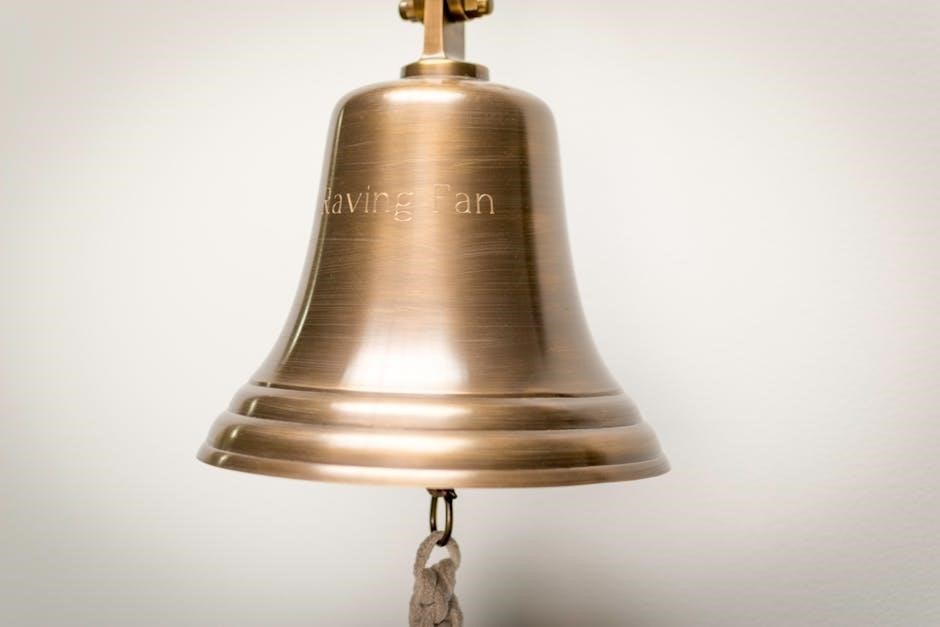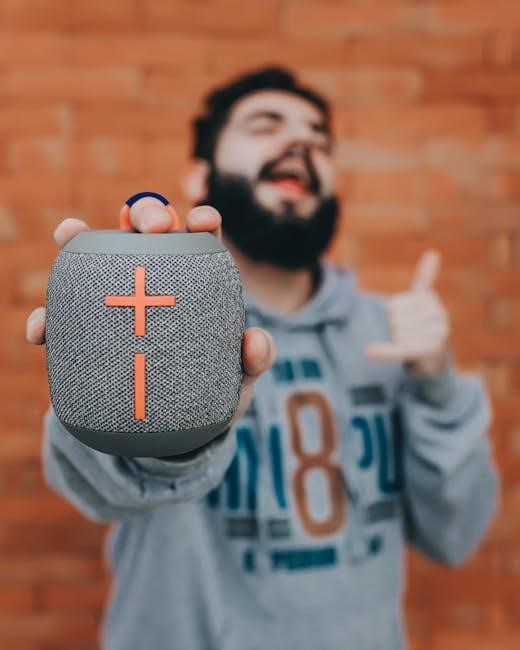A sound wall is a visual tool organizing phonemes with mouth pictures and key images, aiding phonics instruction by linking sounds to articulations and spellings effectively.
What is a Sound Wall?
A sound wall is a visual instructional tool used in phonics to organize sounds (phonemes) with corresponding mouth pictures and key images. It helps students connect sounds to their articulations and spellings. Sound walls are typically arranged by consonants and vowels, showcasing how sounds are produced and spelled. They include phoneme cards, mouth placement visuals, and examples of words for each sound. This student-friendly resource makes phonics instruction engaging and accessible, focusing on the sounds students hear rather than just letter names.
Importance of Sound Walls in Phonics Instruction
Sound walls are a powerful tool in phonics instruction, helping students connect sounds to their articulations and spellings. By organizing phonemes visually, sound walls enhance phonemic awareness and decoding skills. They provide articulatory cues through mouth pictures, making sound production tangible for learners. This visual and auditory connection supports students in understanding how sounds relate to letters and spelling patterns. Sound walls also promote systematic phonics instruction, reinforcing phoneme-spelling relationships and aiding in word recognition. Their student-friendly design makes phonics accessible and engaging, fostering a deeper understanding of sound-letter connections.

Components of a Sound Wall
A sound wall typically includes phoneme cards with mouth pictures, key images for sound identification, and organization by consonants and vowels for clear, systematic phonics instruction.
Phoneme Cards with Mouth Pictures
Phoneme cards with mouth pictures are essential for linking sounds to their articulations. Each card displays the phoneme, its mouth formation, and often a key image. This visual representation helps students connect sounds to their spellings and understand how sounds are produced. The inclusion of mouth pictures makes phonemes tangible, aiding in pronunciation and recognition. These cards are organized systematically, often by consonants and vowels, to provide a clear framework for learning. They are a cornerstone of sound wall instruction, making phonics accessible and engaging for all learners. This tool is invaluable for teaching sound-spelling relationships effectively.
Key Images for Sound Identification
Key images play a crucial role in sound identification by providing visual cues that reinforce phonemes. These images, often simple and iconic, help students associate sounds with meanings. For example, a cat might represent the /k/ sound. The images are paired with mouth pictures, creating a multi-sensory approach that enhances learning. This combination supports students in recognizing and remembering sounds more effectively. By linking sounds to visuals, key images make phoneme instruction engaging and accessible, especially for visual learners. They are an integral part of a sound wall’s effectiveness in phonics education.
Organization by Consonants and Vowels
Sound walls are typically organized into two main categories: consonants and vowels. This structure helps students recognize and differentiate sounds based on their articulation. Consonants are grouped by their place and manner of articulation, while vowels are organized by their mouth shapes and sounds. This logical arrangement makes it easier for learners to identify and compare sounds. By categorizing phonemes this way, sound walls provide a clear and accessible framework for understanding the sounds of language, enhancing phonics instruction and sound identification skills.

Benefits of Using a Sound Wall
Sound walls enhance phonics instruction by providing visual and articulatory cues, helping students connect sounds to spellings and mouth movements, improving sound-spelling relationships and literacy skills effectively.
Student-Friendly Organization
Sound walls are designed from the learner’s perspective, focusing on the sounds students hear rather than letter names. This organization helps students connect sounds to spellings and words intuitively. By arranging sounds into consonants and vowels, sound walls make phonics patterns visible and accessible. Mouth pictures and key images further support this connection, making it easier for students to identify and remember sounds. This student-friendly approach fosters engagement and understanding, creating a meaningful link between sounds, articulations, and spellings in phonics instruction.
Visual and Articulatory Cues for Learning
Sound walls provide visual and articulatory cues, such as mouth pictures, to help students connect sounds to their articulations. These cues, like images of mouth placements, guide students in understanding how sounds are formed. Key images reinforce sound-spelling relationships, making phonics more concrete. By linking sounds to visuals, sound walls create a powerful tool for recognizing and remembering phonemes, ensuring effective and engaging phonics instruction for all learners.

Setting Up a Sound Wall
Setting up a sound wall involves organizing phonemes with mouth pictures and key images, ensuring sounds are grouped logically for easy access and visual learning.
Step-by-Step Guide to Creating a Sound Wall
To create a sound wall, start by gathering materials like phoneme cards, mouth pictures, and key images. Print and prepare the cards, ensuring each sound is represented with its articulation and visual cues. Organize the layout by grouping consonants and vowels separately. Mount the cards on a large display or board, arranging them in a student-friendly manner. Add images and spellings to reinforce sound-spelling relationships. Personalize the wall by including pictures of students’ mouths for relatability. Finally, introduce the wall to your class and update it as new sounds are learned.
Personalizing with Student Mouth Pictures
Enhance engagement by personalizing your sound wall with students’ mouth pictures. Use free downloadable resources, such as PDF files, to create custom cards. Include images of students articulating sounds, making the wall relatable and interactive. This approach helps students connect sounds to familiar faces, fostering phonemic awareness. Mouth pictures paired with phonemes and spellings provide clear visual cues, aiding in sound identification and spelling relationships. Personalization makes learning more meaningful and accessible for all learners.

Using a Sound Wall in the Classroom
A sound wall enhances phonics instruction by visually linking sounds to articulations and spellings. Use free PDF resources and editable templates to create an interactive classroom tool.
Introducing Sounds with Mouth Pictures
Introducing sounds with mouth pictures helps students connect phonemes to their articulations. Use free PDF resources featuring mouth formations and key images to demonstrate sound production. This approach engages visual and kinesthetic learners, making phonics instruction interactive. Teachers can display mouth pictures alongside phoneme cards to show how sounds are made. Free editable templates allow customization, such as adding student photos for personalization. This method supports phonemic awareness and helps students recognize spelling patterns effectively in the classroom.
Reinforcing Phoneme-Spelling Relationships

Sound walls with mouth pictures enhance phoneme-spelling connections by visually linking sounds to their articulations and spellings. Free PDF resources include phoneme cards, mouth images, and exemplar words, helping students recognize sound patterns. Teachers can use these tools to demonstrate how specific mouth placements correspond to letters and words. Editable templates allow customization, such as adding sight words, making instruction tailored and engaging. This reinforces phonemic awareness and spelling skills, ensuring students grasp the relationship between sounds and their written forms effectively.

Free Sound Wall Resources
Downloadable PDF files with mouth pictures and editable templates are available, offering a versatile tool for creating interactive sound walls tailored to classroom needs.
Downloadable PDF Files with Mouth Pictures
These PDF files provide phoneme cards with mouth pictures, key images, and sound-spelling relationships. They are ready to print and organize into a classroom sound wall, making phonics instruction engaging and effective for students. The files include articulation visuals and word examples, helping students connect sounds to their spellings. Teachers can customize the PDFs to fit specific classroom needs, ensuring a tailored approach to phonics learning. This resource is a valuable tool for structured and interactive phonics instruction.
Editable Sound Wall Templates for Sight Words
These templates allow teachers to customize sound walls by typing sight words, ensuring flexibility and adaptability to classroom needs. They often include space for mouth pictures and key images, helping students visually connect sounds to words. Editable PDFs enable educators to tailor the content, making phonics instruction more engaging and effective. This resource supports differentiated instruction, catering to various learning styles and promoting a deeper understanding of phoneme-spelling relationships in a structured and interactive manner.

Sound Wall Ideas and Inspiration
Discover creative sound wall designs on Pinterest and Teachers Pay Teachers. These resources offer inspiration for organizing phonemes, mouth pictures, and key images to enhance classroom engagement and learning.
Discovering Creative Sound Wall Designs

Explore innovative sound wall designs that incorporate mouth pictures and key images for phoneme recognition. These designs often feature colorful layouts and engaging visuals to capture students’ attention, making phonics instruction more interactive and fun.
Browse resources on Pinterest and Teachers Pay Teachers for inspiration. Many designs include customizable templates, allowing educators to tailor sound walls to their classroom needs while maintaining clarity and effectiveness.
Some designs even integrate student photos, creating a personalized learning experience that fosters engagement and phonics mastery.
Teachers Pay Teachers Resources
Teachers Pay Teachers offers a wide range of sound wall resources, including downloadable PDF files and editable templates. These resources often feature mouth pictures, key images, and phoneme cards to support phonics instruction. Many designs are customizable, allowing teachers to tailor sound walls to their classroom needs. Popular resources include sound wall sets with articulation visuals and sight word templates. These materials are trusted by millions of educators for their effectiveness in teaching phonemic awareness and sound-spelling relationships.
Sound walls maximize phonics learning with visual, articulatory cues and personalization. Free PDF resources offer customizable tools, enhancing student engagement and effectiveness in phonemic awareness and spelling instruction.
Maximizing the Effectiveness of a Sound Wall
To maximize effectiveness, sound walls should be organized by phonemes, using mouth pictures and key images to visually cue articulations and spellings. Including student-friendly features like personal mouth photos or editable templates ensures engagement and relevance. Teachers can enhance learning by incorporating interactive activities, such as matching games or word building, to reinforce phoneme-spelling relationships. Regular updates and customization, such as adding sight words or seasonal themes, keep the sound wall dynamic and aligned with curriculum goals. This tool becomes a central resource for phonics instruction and independent practice, fostering a deeper understanding of sounds and their spellings while encouraging student autonomy in learning.
